Money plants are not only known for their beauty but also for the belief that they bring good fortune and positive energy into homes. These versatile plants are low-maintenance and can thrive in various conditions, making them a popular choice for indoor and balcony gardens. Whether you’re a seasoned gardener or a beginner, money plants offer a simple way to add greenery to your space.
In this guide, we will explore 10 types of money plants and provide easy care tips for each. From the classic pothos to lesser-known varieties, you’ll learn how to nurture these plants and help them thrive in your home or balcony.
1. Golden Pothos
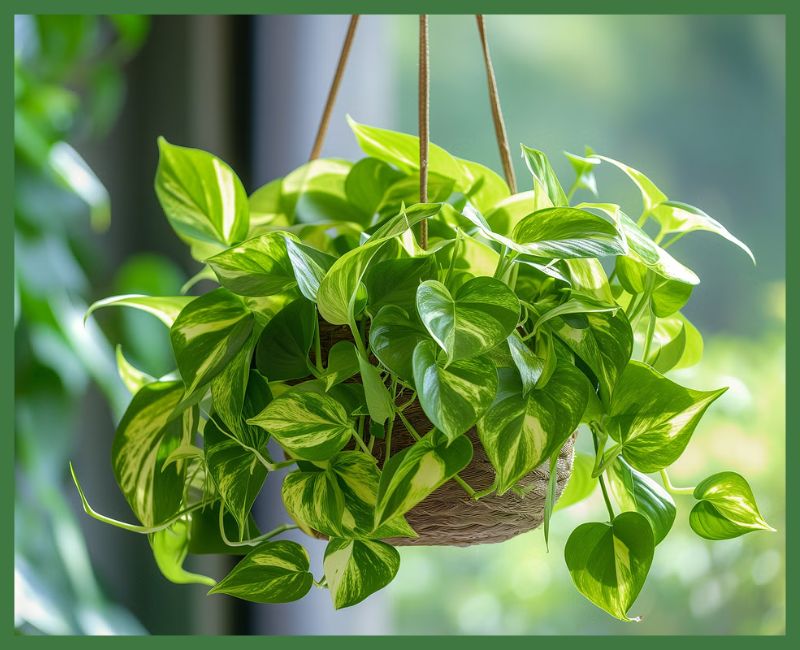
The Golden Pothos, also known as Devil’s Ivy, is the most common type of money plant. It is popular for its heart-shaped green leaves with yellow variegation. Golden Pothos is ideal for beginners due to its tolerance of low light and irregular watering.
- Light: Indirect sunlight or low light.
- Watering: Water when the top inch of soil is dry.
- Ideal Placement: Indoor corners, hanging pots, or balconies with indirect light.
Care Tip: Ensure that the plant is not exposed to direct sunlight as it may scorch the leaves.
2. Neon Pothos
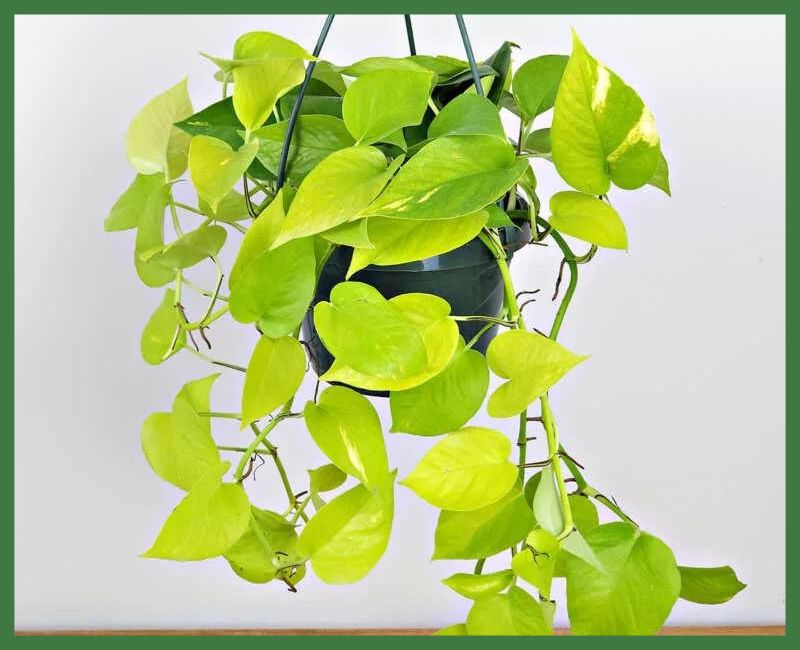
Known for its vibrant, neon-green leaves, the Neon Pothos is a striking variation of the classic pothos. Its bright foliage makes it an attractive addition to any room, and it grows quickly in favorable conditions.
- Light: Bright, indirect sunlight.
- Watering: Water when the topsoil feels dry.
- Ideal Placement: Near windows with filtered light.
Care Tip: Rotate the plant regularly to ensure even growth, as it tends to lean towards the light.
3. Marble Queen Pothos
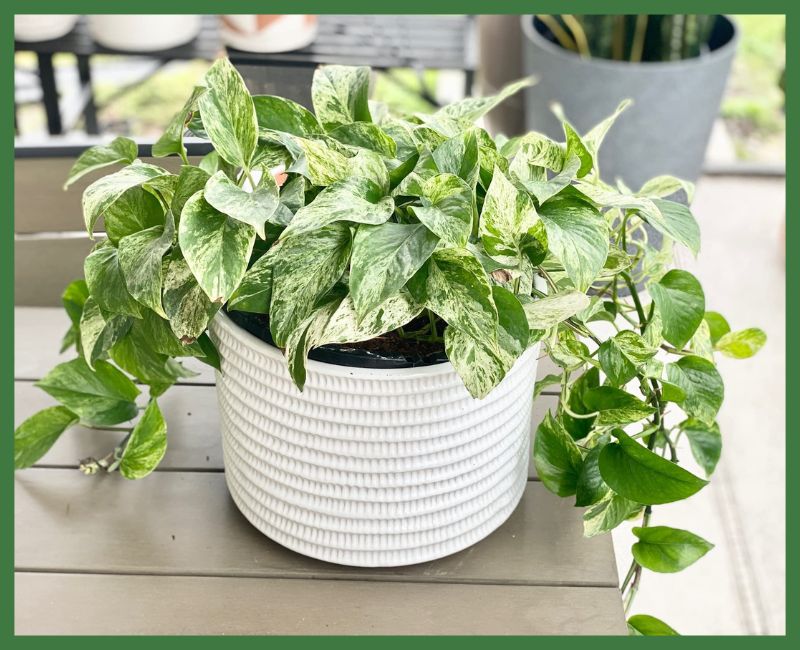
The Marble Queen Pothos is known for its elegant white and green variegation, which adds a luxurious touch to any space. Although it grows slower than other pothos varieties, its beauty makes it worth the wait.
- Light: Bright, indirect light.
- Watering: Keep the soil slightly moist.
- Ideal Placement: Indoors with filtered sunlight.
Care Tip: Avoid overwatering, as Marble Queen is prone to root rot.
Read more – Balcony Money Plant Climbing Ideas for Stunning Decor
4. Jade Pothos
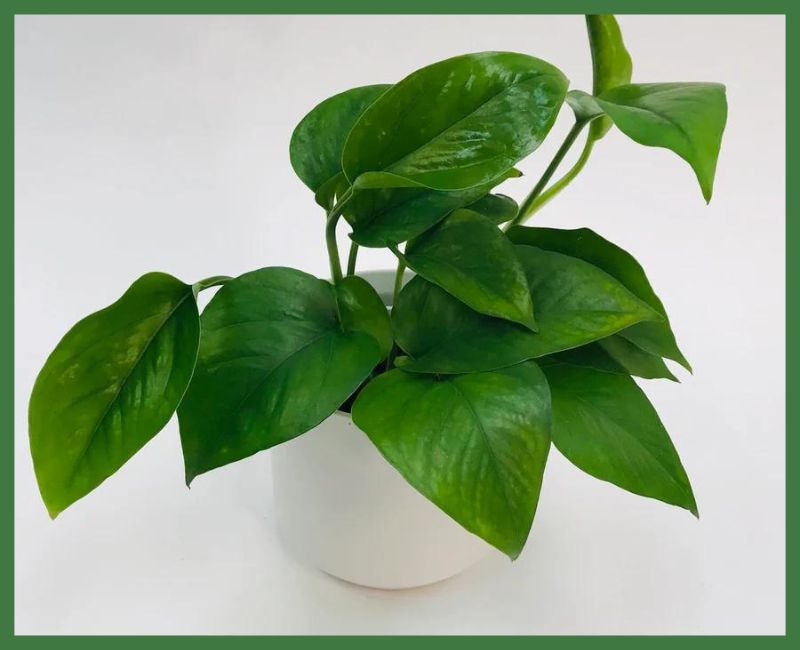
The Jade Pothos features deep green leaves without any variegation, giving it a simple yet elegant look. It’s easy to care for and thrives in both low-light and bright-light conditions.
- Light: Indirect sunlight or low light.
- Watering: Water when the top layer of soil is dry.
- Ideal Placement: Shady corners or spots with indirect light.
Care Tip: This plant is perfect for low-light areas, but it grows faster in bright, indirect light.
5. Satin Pothos
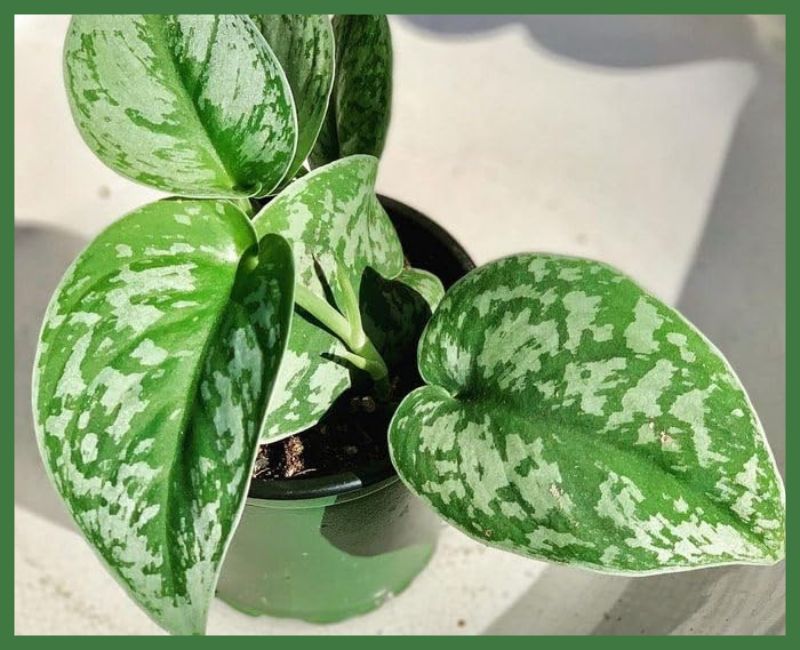
The Satin Pothos has beautiful, velvety leaves with silver speckles. Its unique texture and trailing habit make it a great option for hanging baskets or plant shelves. While it shares similar care needs with other pothos varieties, its striking appearance sets it apart.
- Light: Bright, indirect sunlight.
- Watering: Water when the topsoil is dry.
- Ideal Placement: Hanging pots or near windows.
Care Tip: Satin Pothos prefers higher humidity, so consider misting the leaves regularly.
6. Manjula Pothos

The Manjula Pothos has large, wavy leaves with a mix of white, cream, and green. This unique variety is a slow grower but is highly prized for its beautiful variegation.
- Light: Indirect sunlight.
- Watering: Water when the soil feels dry.
- Ideal Placement: Bright indoor spaces with filtered light.
Care Tip: Avoid exposing this plant to direct sunlight as it can damage the delicate leaves.
7. Cebu Blue Pothos

With its striking bluish-green leaves, the Cebu Blue Pothos stands out from other money plants. It’s a fast-growing variety that can trail beautifully, making it ideal for balconies or hanging baskets.
- Light: Bright, indirect light.
- Watering: Water when the top inch of soil is dry.
- Ideal Placement: Hanging pots or balcony railings.
Care Tip: Cebu Blue loves humidity, so misting the plant regularly can help it thrive.
8. Silver Pothos

The Silver Pothos has eye-catching, heart-shaped leaves with silver variegation. It grows well in low-light environments, making it a perfect indoor plant for Indian homes with limited sunlight.
- Light: Indirect light or low light.
- Watering: Water when the topsoil dries out.
- Ideal Placement: Shelves or hanging pots.
Care Tip: Keep this plant in well-draining soil to prevent root rot.
9. Hawaiian Pothos
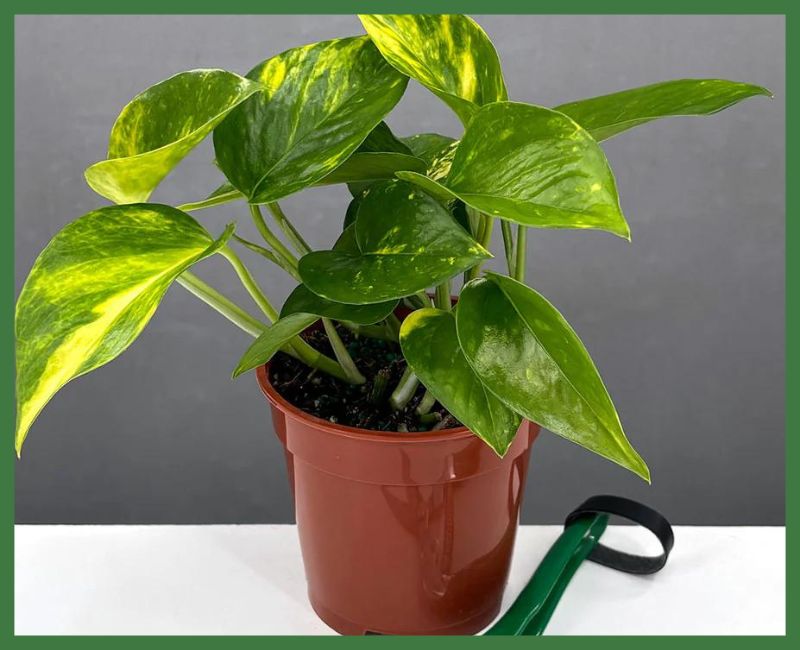
The Hawaiian Pothos features larger leaves compared to other pothos varieties, with striking yellow variegation. This plant grows quickly and can be trained to climb up trellises or poles.
- Light: Bright, indirect light.
- Watering: Water when the soil is dry to the touch.
- Ideal Placement: Balcony or near a sunny window.
Care Tip: Prune regularly to keep its growth manageable.
10. Pearls and Jade Pothos
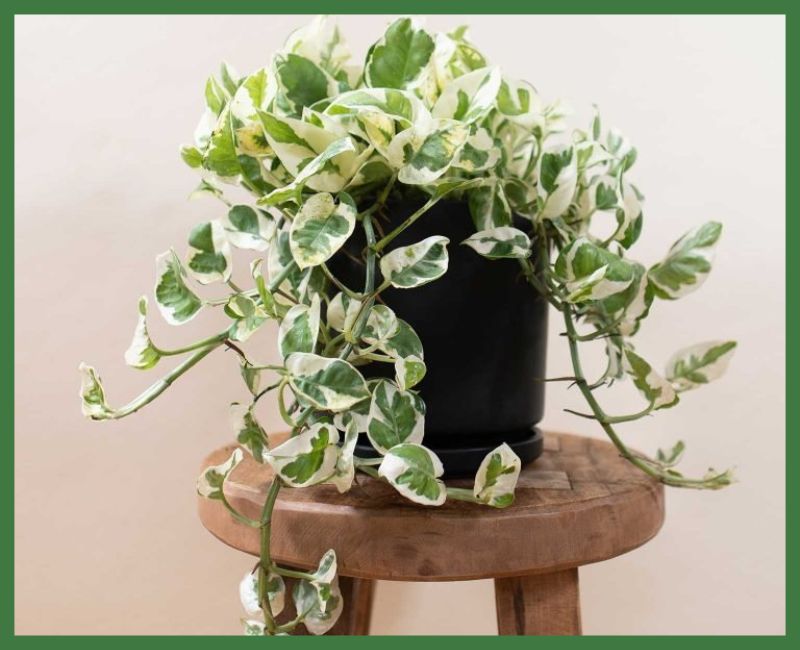
The Pearls and Jade Pothos is a stunning variety with white and green variegation. Its leaves are smaller than other pothos varieties, but its unique pattern makes it highly desirable.
- Light: Bright, indirect light.
- Watering: Water when the topsoil is dry.
- Ideal Placement: Indoors near bright windows.
Care Tip: Keep this plant away from direct sunlight to prevent leaf burn.
General Care Tips for All Money Plant
While each variety may have specific needs, there are some general tips that apply to all money plants:
- Soil: Well-draining soil is essential to prevent root rot.
- Watering: Most money plants prefer slightly dry soil. Water only when the top layer feels dry to the touch.
- Light: Indirect sunlight is ideal for most varieties. Avoid direct sunlight as it can scorch the leaves.
- Humidity: Money plants thrive in humid environments, so consider misting your plants, especially during the dry season.
- Fertilizer: Use a balanced liquid fertilizer once a month during the growing season for healthier growth.
Read More – Fastest Growing Balcony Plants in India
Money plants are versatile and easy to care for, making them perfect for both beginners and experienced gardeners. Whether you’re growing them indoors, on your balcony, or in hanging pots, these 10 types of money plants offer a variety of colors and textures to enhance your home.
By following this care guide, you can enjoy a thriving money plant collection that will not only beautify your space but also bring positive energy, according to traditional beliefs.
FAQs about Money Plants
What are the benefits of having a money plant?
Money plants are believed to bring good luck, wealth, and prosperity according to Vastu and Feng Shui principles. Additionally, they are great air purifiers, removing toxins like formaldehyde and benzene from the air.
How often should I water my money plant?
Money plants prefer slightly dry soil. Water them when the top inch of the soil feels dry to the touch. Overwatering can cause root rot, so it’s important to avoid keeping the soil too wet.
Can I keep a money plant indoors?
Yes, money plants thrive indoors, especially in bright, indirect sunlight. They can grow well in low-light conditions too, making them perfect for homes and offices.
How do I propagate a money plant?
Propagating a money plant is easy. You can cut a healthy stem with at least 4-5 leaves, place it in water or soil, and wait for roots to grow. Once roots appear, the cutting can be planted in soil.
Can I grow money plants in water?
Yes, money plants can grow in water. Simply place a cutting in a glass jar or vase filled with water, ensuring the nodes are submerged. Change the water every 1-2 weeks to keep it fresh.
How fast do money plants grow?
Money plants are fast growers. Under ideal conditions, they can grow several inches per month. Regular pruning encourages fuller, bushier growth.
Why are the leaves of my money plant turning yellow?
Yellow leaves can indicate overwatering, poor drainage, or lack of sunlight. Check the soil moisture and ensure the plant gets enough indirect sunlight. Adjusting watering habits usually resolves the issue.
Can I keep a money plant in my bedroom?
Yes, money plants are safe for bedrooms. They can help purify the air and create a relaxing atmosphere. Just make sure the plant has access to some indirect light.
Is the money plant toxic to pets?
Yes, money plants (especially pothos varieties) can be mildly toxic to pets like cats and dogs if ingested. It’s best to keep them out of reach of your furry friends.





